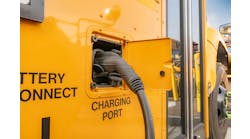A new report by IDTechEx forecasts potential for a $100 billion market for electric vehicles that do not need the grid, but rely on their own power supply like solar and wind.
The report calls these energy independent electric vehicles, or EIVs.
EIVs were nothing more than a curiosity just five years ago, “too weak to lead to anything generally useful,” says an executive summary of the report. But now both a solar plane and solar boat have rounded the world.
The report says EIV golf carts, small buses and passenger boats are on the market. Meanwhile, solar dirigibles for heavy lifting and long distance transport are being prepared for sale. Several solar cars may be ready for use as soon as 2020. Boats are in development that are entirely powered by electricity from on-board wind turbines, solar, tide and waves, the report says.
EIVs will employ multi-mode energy harvesting, extreme powertrain efficiency, light-weighting, streamlining and other new advances, says the report.
The vehicles have little, if any, use for electric utilities and charging stations. Less battery may be needed – sometimes no battery at all.
Electric vehicles that do not need the grid offer a lot of market potential — even more than automated vehicles, says the report. EIV technology is likely to transform both vehicles driven by humans and automated vehicles.
Not surprisingly, the military is now exploring EIVs for unmanned military and non-military aircraft that will stay aloft for 5-10 years – energy independent. But EIVs also conjure up some unusual, more immediate markets. Stay tuned food trucks. An Italian pizza van does all its travel and cooking with energy it generates itself. The report says that the van uses unfolding solar plus a telescopic, unfurling wind turbine used when it is stationary.
A free executive summary is here of the report, Energy Independent Electric Vehicles Land, Water, Air 2017-2037.
Follow Microgrid Knowledge on Twitter @MicrogridNews.






